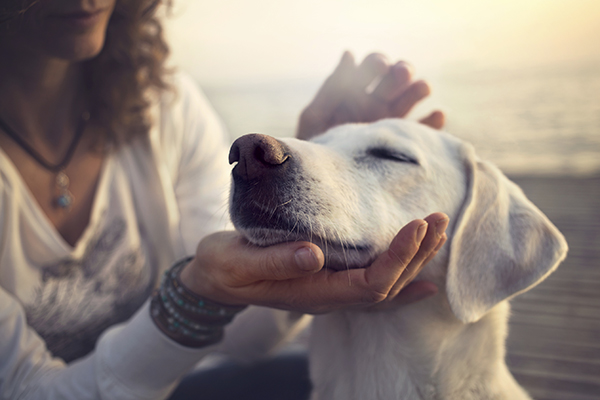
by Admin 2 | Oct 13, 2016 | Dog Health
Your Most Common Pet Issues and Our Most Helpful Supplements Throughout the past 14 years, hundreds if not thousands, of customers have asked us health related questions about their cats and dogs. And while every pet is unique, the vast majority of questions fall into just a handful of categories. Check out our most frequently asked questions along with some great supplements that can help!
My dog has been having loose stools/digestive upset, what can I do?
After investigating their primary food (did they just change foods? Is the food they are currently eating, the right food for them? Do they have any food sensitivities or allergies?), and making changes if necessary, most dogs will benefit from the following:
- OptaGest – Made locally, Optagest contains prebiotics plus digestive enzymes that can be taken daily to support normal digestion. Prebiotics work quickly to get your pet’s gut back to a healthy, natural state. In fact, prebiotics will double your pet’s good bacteria every 20 minutes. That means, in just 3 hours, 1000 bacteria will become over 5 million! An added bonus is that OptaGest both prevents and treats Giardia, which can cause ongoing loose stools.
- Canned Pumpkin – Because of it’s high fiber content, pumpkin can help when your dog is suffering from diarrhea.
- Dehydrated Pumpkin – Diggin Your Dog’s Firm Up! contains USA Grown, pesticide free pumpkin and apple. Simply mix with water and use what you need to help with digestion. It’s easy to travel with, which makes it perfect for upset tummies while on the road.
My dog has stinky breath.
Struttin Pup carries some great products like Indigenous Dental Bones, Natural Balance Dental Chews and Whimzees Dog Chews that can all help clean your dog’s teeth and freshen breath. But there’s one product that gets to the root of the problem on bad breath…
- Grin – Poor digestion can be a major factor leading to your pup’s bad breath. In Clover’s Grin contains prebiotics as well as green tea (which has antibacterial and anti-plaque properties), chlorophyll (to neutralize mouth odors) and Anise (which refreshes your dog’s breath).
My pet is getting older, limping, not as mobile, etc
We’ve had dogs that are 16 and can barely walk due to crippling arthritis; but we’ve also had 6 month old dogs that had surgeries, have hip displaysia, etc. Young or old, there are some go-to supplements that can help alleviate pain and inflammation.
- Connectin – This is the ONLY joint supplement clinically proven by independent researchers to improve mobility and comfort in an average of 15 days.
- Fish Oil – High doses of Omega-3 Fatty Acids reduce inflammation, which is essential for dogs with arthritis and orthopedic problems.
- Pet Releaf – Scientific studies from Israel – and peer reviewed by their own National Institutes of Health scientists – which has shown that whole plant based CBD oils (such as Pet Releaf manufactures) provide significant relief from pain and inflammatory related issues superior to the relief provided by opiates. And the good news is that the relief is provided with ZERO negative side effects compared to steroid anti-inflammatories or opiate pain killers. Pet Releaf whole plant CBD oil follows the science – organic whole plant CBD oils extracted with NO chemical solvents.
For dogs getting up there in age, whole plant CBD oil has also been shown in extensive clinical studies in Israel to slow the aging process in the brain. The fact that CBD acts as a neuroprotecrtant and holds anti-aging properties is actually part of a patent granted to 3 NIH scientists. One of those scientists, by the way, won the Nobel Prize for Medicine in 1970. That means our dogs (or even for us human companions that take CBD oil daily) can stay mentally younger much longer if they use a properly made CBD oil daily.
My pet is anxious
• Pet Releaf – In general, anxiety issues for dogs and cats typically can be cast into 2 categories – situational or behavioral. Situational would include things like halloween, fireworks, thunderstorms, big holiday parties, and most travel anxieties. Whole plant CBD oil is wonderful for these situational anxieties – although it is not 100%. Nothing is 100%. Often times, the CBD will allow them to “chill out” or get enough of the anxiety under control that they can function. CBD does this by modulating the hyperactive transmission in the brain.
Behavioral anxieties would include anything instinctual such as separation anxiety for young dogs or dogs who are left alone for long periods, aggressive barking for chihuahuas, nervous/destructive actions from high energy dogs, etc. Behavioral anxieties will also include “learned” anxieties such as fear aggression for rescues that were mistreated.
CBD will not “cure” something instinctual or a learned, behavioral issue. In those cases, we always recommend that a professional trainer be consulted. CBD can help focus the brain in that training, but the professional trainer will be the true solution for those dogs.
My pet is going through chemotherapy, what can I do to help?
- Pet Releaf – Pain, discomfort, and an overall malaise are pretty much a guarantee when a dog goes through chemo. They will often lose most of their appetite as well. This is one of the biggest areas of success for whole plant CBD oil. The CBD will control the pain, turbo boost the remaining immune system, and act as an anti-depressant – which will help increase the dog’s appetite. Further, there is a scientific study from Israel that showed using whole plant CBD in conjunction with chemo actually had a stronger tumor reduction and anti-cancer effect than chemo alone. They also found the cancer relapse rate much lower in the CBD/chemo lab mice. In reality, every mammal (dogs, cats and humans) should be ingesting CBD oil daily to utilize its anti-cancer properties – massive anti-inflammatory and turbo boost to the immune system. Don’t wait for cancer to rear it ugly head – use CBD to hopefully prevent it from ever appearing.
My dog is itchy
Yes, we live in Colorado and it’s dry. The number one thing we are sure to recommend, if you are feeding a dry food (kibble) diet, is to add some raw food into your pet’s diet. Dry foods have a dehydrating effect on your pet’s skin since they process out the good oils that contribute to a healthy skin and coat. You are guaranteed to see a huge difference by making just 25% of your pet’s diet raw food. Allergies can also play into the problem, so we’ll be sure to look at your dog’s current diet and possibly refer you to Windhorse Advanced Healing, where Catherine can identify and detoxify allergens and pathogens. Then there are fleas, ticks and other dermatitis’ (in which case, you’ll need to see the vet). In the meantime, these are all things that can help your dog NOW:
- Fish Oil – Just like us, our dogs are often deficient in Omega-3’s. Fish oil has long been known to help with dogs suffering from allergies (as it reduces inflammation) as well as improve their skin and coat. Now we know that there are far more benefits to fish oils. Fish oil is shown to help with heart disease, high cholesterol, renal failure, arthritis, and cancer.
- OptaGest – What if there are internal factors affecting our pets’ skin & coat health? Internal upsets and imbalances are often reflected externally in itchy spots (sometimes called hot spots), persistent licking and smelly ears. In this case, you’ll want to reach for a digestive aid like OptaGest to restore intestinal balance. OptaGest contains only two ingredients – period: prebiotics and plant-based digestive enzymes. Unlike probiotics which introduce unnatural, foreign bacteria into the body, prebiotics are a superfood for our pets’ unique, native mix of beneficial bacteria. This selective feeding quickly repopulates the intestinal tract with good bacteria that in turn, produce essential nutrients and crowd out any harmful bacteria. Supplementing with digestive enzymes will support efficient digestion, enhanced nutrient uptake and may resolve some food intolerances.
- Dr Angie’s Itchy Dog Solution – Learn why dog’s itch and what you can do about it! This course will guide you through both alternative and traditional therapies used for itchy dogs. It’s a must-take course for those of us who have chronically itchy dogs.
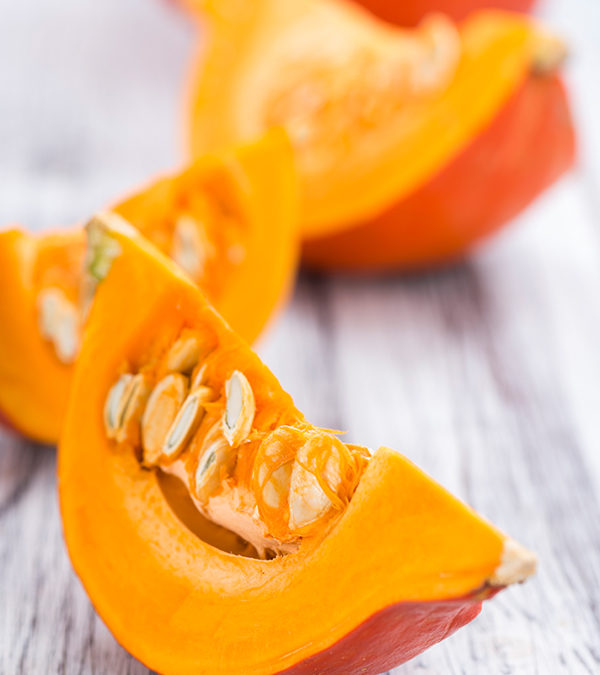
by Admin 2 | Sep 22, 2016 | Dog Health, Dog Nutrition
In 2000 my dog, Reed, needed surgery, but was a tad too plump for a successful recovery to ensue. The surgery was scheduled in four weeks, so we needed to work fast to shed his extra pounds. More exercise was not the answer since she had a herniated disc. The surgeon at CSU had the answer, pumpkin. We reduced the amount of food Reed normally ate, and replaced that amount with canned pumpkin. Pumpkin is low in calories and high in fiber (and other vitamins and antioxidants) so it gives your dog a sense of fullness while keeping the waistline slim and trim.
Fast forward 16 years, and we are still sharing Dr Smith’s advice to Struttin Pup customers. As we approach pumpkin season, we wanted to share some other benefits that pumpkin can offer your dog in addition to the tried and true weight loss trick!
Pumpkin Benefits
- Digestive Issues – Whether your dog is suffering from constipation or diarrhea, pumpkin can help! Because of its’ high fiber content, pumpkin helps with digestive regularity.
- Overall Health/Urinary Health – Did you know that dogs can eat raw pumpkin seeds? While we suggest you feed them one at a time or crush them in your dog’s food, they’re worth feeding. The oils found in pumpkin seeds and flesh are believed to help with urinary incontinence. Plus they’re high in Omega-3 Fatty Acids, Antioxidants, Vitamin A, Beta Carotene, Potassium and Iron, which can help prevent cancer and support the immune system.
- Moisture – Most pets (especially those on a dry kibble diet) are deficient in moisture. Because our favorite fall fruit (yes, pumpkin is a fruit not a vegetable) is 90% water, this will help your pet’s hydration levels.
- Worms – Yes, you read that right. Worms. Raw, organic pumpkin seeds contain the amino acid, cucurbitin, which rids worms from the digestive track. For a great “how to” article, check this out: http://www.dogsnaturallymagazine.com/pumpkin-seeds-natural-worms-dogs/
- Weight Management – Pumpkin is the answer to the number one most asked question, “How can I help my dog lose weight”. It’s so easy to help your dog drop a few pounds quickly. Simply reduce the amount of dog food your dog normally eats and replace it with canned pumpkin. For example, say that your pup normally eats 1 cup at each meal. We would recommend starting with 3/4 cup of food + 1/4 cup of canned pumpkin instead. The number two most asked question, after we explain how to use pumpkin for your dogs’ weight loss, is “Will it work for me?!” But that’s a topic for another blog!
Join us for:
This Friday, September 23rd, 4-6pm, we are celebrating the launch of Struttin Pup’s FREE online recipe book. Stop by for a tutorial on how to stuff your dog’s toys with healthy and natural foods to give them a long lasting treat. There will be discounts for stuffable toys, giveaways and a free stuffings bar where you can stuff your own toy and take it home.
And in honor of pumpkin season, we’ll have the ingredients for a BONUS pumpkin recipe.
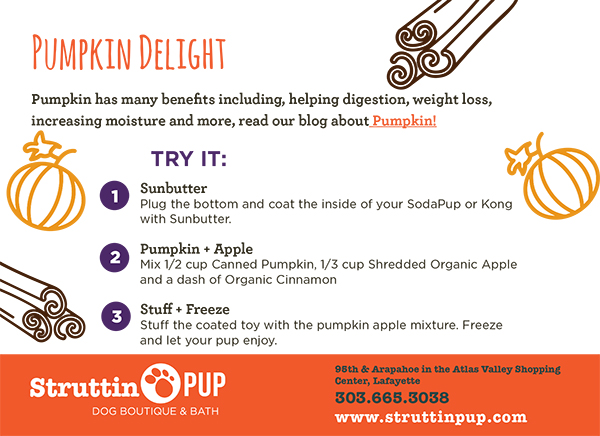
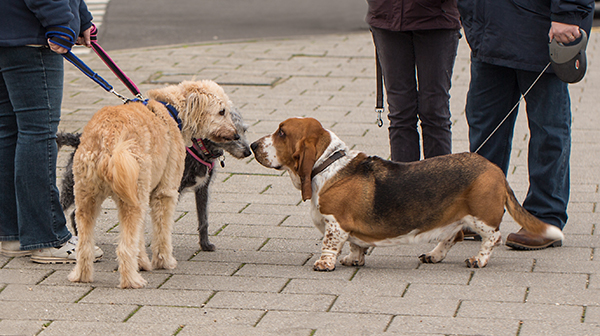
by Admin 2 | Sep 3, 2016 | Dog Health, Dog Joy
Here at Struttin Pup we are more than just a pet store. We build community by providing fun and informative events. These events are a great opportunity for humans and fur babies to socialize. Some dogs are cool as a cucumber around other dogs and people. Other dogs are shy, fearful, aggressive or hyper when around other dogs and people. Whether you have a social butterfly or a wallflower, we have put together some helpful tips that will help ensure that everyone has a great time, most especially your dog!
1. Always ask the owner if it is ok for you and your dog to interact with their dog before meeting.
2. Remain Calm. Your dog can sense your anxiety through your body language. Keep your dog’s leash loose. Sometimes tension on the leash will communicate to your dog that you are nervous and will, in turn, make them nervous.
3. Have some high value treats (Struttin Pup will always have plenty of treats for you at our events) that can distract your dog’s attention back to YOU. Treat your dog often for remaining calm and focused on you.
4. Pay attention to body language. If your dog (or the dog you are meeting) stiffens their bodies, stares into the other dog’s eyes with their hair raised and teeth bared or lunges (even in excitement), put some space between them and give them time to calm and get used to each other from afar.
5. Don’t feel guilty if your dog isn’t a social butterfly. Your dog doesn’t need to be the life of the party, but he does need to BE social and NOT aggressive with other dogs. Keep a close eye on your dog and always keep him on leash. If you think that he’s starting to feel overwhelmed, it’s best to be a wallflower and take a break from the action!

by Admin 2 | Aug 3, 2016 | Dog Health, Dog Joy, Dogs
Though our pools won’t be much more than ankle deep, our upcoming Pool Party on Saturday, August 27th got me thinking about dogs and swimming. I have a Golden Retriever that won’t swim. She obviously never got the memo that she’s a water dog. Though we assume dogs are natural born swimmers, not all breeds (or all dogs, even if they are “water dogs”) are. Some breeds can’t swim at all and will sink without a floatation device. It’s a great idea to introduce your dog to water when it’s a puppy. But, regardless of age, these steps below will help get your dog swimming in no time (or at least they’ll be more comfortable with water!). Some dogs may take to swimming quickly, but if yours doesn’t, don’t worry. These steps can be done over a period of several days so they don’t get overwhelmed.
Breeds That Are The Worst Swimmers
1. English Bulldog
2. Pug
3. French Bulldog
4. Corgi
5. Dachshund
6. Bull Terrier
7. Basset Hound
8. Chow Chow
9. Pekingese
10. Shih-Tzu
1. NEVER throw your dog into the water for her first swim. This will only ensure that she’ll never want to swim again.
2. Start somewhere quiet and shallow so that you can walk in the water beside your dog. Keep your dog leashed until they are able to swim unassisted and consistently come back to you when called. If needed, have them wear a life vest (especially if they are one of the breeds listed above). Let them get used to getting their feet wet. You know how shocking it can be when your toes hit cold water initially. It takes time for your dog to get used to it too!
3. Bring some favorite toys or treats to help coax her farther into the water.
4. This next step can be tough with Colorado’s cold water temperatures, even in the summertime. But using lots of verbal praise, take her deeper into the water until she has to start paddling to stay afloat. If she needs a little extra support, put your arm under her belly. This will help her use her rear legs along with her front legs. She’ll tire more easily if she is only using her front legs to swim. Support her until she is using all four legs to swim.
5. If your dog starts to panic, go back to shallow water, calm down and try again!
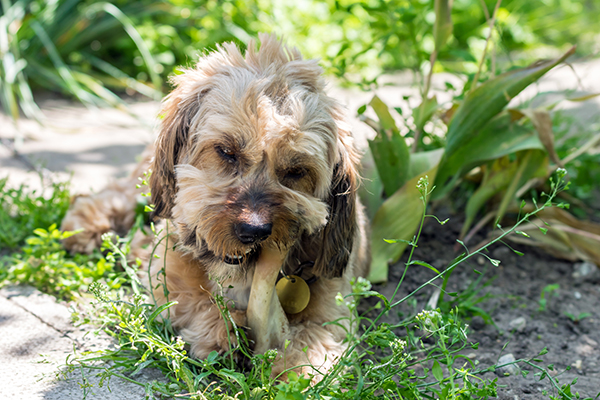
by Admin 2 | Jul 21, 2016 | Dog Health, Dog Joy
ltThree years ago, after bringing home my new pup, Sage, I asked my holistic vet about safe and long lasting things to give her to chew on while she was home alone. Her number one recommendation, hands down, was a stuffed and frozen Kong.* (For those wondering, raw bones came in a close second.)
Many people think that Kongs are meant to be stuffed with peanut butter and anything else that Kong, itself, manufactures. Not true! First of all, that much peanut butter isn’t good for anybody – including your dog. Can you imagine how much peanut butter it would take to stuff a Kong? Even a small Kong would take at least half a cup! That’s just asking for a tummy ache. Personally, I like almond butter (the Paleo world has influenced me, I suppose!) and my dog, Sage doesn’t seem to mind. In fact, she runs to the kitchen whenever a jar of almond butter is opened! While I don’t recommend stuffing an entire Kong with almond butter, it is a great option to start or finish stuffing a Kong with, as it makes a great seal (so that the gooey ingredients listed below don’t fall out). It’s also a good idea to use your fingers to line a little bit of it inside your Kong – this will really keep your dog busy trying to lick it out!
So, if using jars and jars of nut butters as a stuffer for your dog’s Kong is out, what are you suppose to use? Here’s a quick list of our favorite foods that can easily keep your dog happy and busy when stuffed and frozen in a Kong:
- Organic, Plain Yogurt
- Natural Baby Food
- Fruits such as bananas, apples slices, strawberries, blueberries and watermelon (just remove the seeds first)
- Veggies such as carrots, green beans, cucumber slices, or zucchini
- Pumpkin (canned)
- Leftovers – salmon, chicken, beef, veggies that are going to go bad in your crisper drawer despite your best intentions to eat them yourself, etc
- Broth (low sodium chicken or beef broth is a great choice and makes an excellent teething treat for a puppy)
- Kibble or Canned Dog Food
- Dog Treats
- Don’t Feed it to the Dog Lis!
Above are my suggestions for WHAT to stuff in a Kong. As to HOW to stuff and freeze them – simple! I like to take as many Kongs as I have (usually 3-5), place them in a large Tupperware container so that the large openings are at the top, and start stuffing! The Tupperware will catch any spills (especially if you’re using something “leaky” like broth or yogurt). Place the Tupperware full of Kongs in the freezer and, viola, you’re set for the week!
Where you give your dog its’ Kong may depend on what you stuff it with. Keep in mind that what freezes, must thaw! And while your dog may be lightning fast at emptying out the Kong, chances are you won’t want to give Fido a Kong stuffed with canned pumpkin and plain yogurt on your brand new oriental rug. So, perhaps its crate, a tiled or hardwood floor or the backyard are the perfect places to let your dog go to town.
Really, once you have a Kong, the ingredients are quite inexpensive, especially when you compare the cost to other chews like bully sticks! It’s a great idea to rotate through different kinds of chews, but your dog will love a stuffed and frozen Kong and this is a great opportunity to get creative in the kitchen! Bon Appetit!
* Throughout this article I use the word “Kong” to describe a toy that can be stuffed with treats to keep your dog busy. Kong is a wonderful option but other options exist, like my favorite – SodaPup. It’s made in the USA out of natural rubber that is sustainable, non-toxic and biodegradable. Think of Kong as the Kleenex of dog toys. While Kong makes a great product and has dominated the market for years, there are other great options available.
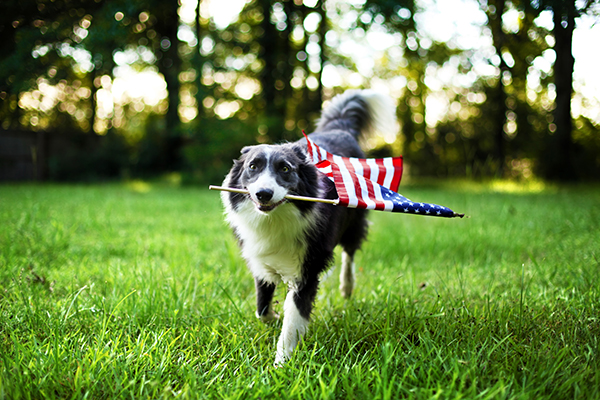
by Admin 2 | Jun 29, 2016 | Cat Health, Dog Health
We have put together some natural remedies to help your pet keep calm this Fourth of July.
As you can imagine we’re coming up on the dogcatcher’s busiest day of the year. In the US, there are more dogs found wandering loose on July 4th than any other day of the year. And for good reason; parades with loud sirens and fireworks are not a dogs best friend. I could also hypothesize that all the outside grilling could make some dogs jump the fence in hope of snatching a hotdog too! Seriously though, having an anxious dog on the Fourth of July is no laughing matter. Many pets (cats too) will whimper, hide, pace, bark, meow, or even become aggressive from the stress.
6 Tips to Keep Your Pet Calm
1. Exercise early on and throughout the day. Just like it is with people, exercise is a great way to manage stress. Toss a frisbee , play fetch with a chuckit
, play fetch with a chuckit  or simply go for a run or walk. Cat’s can play too! Interactive toys like Da Bird
or simply go for a run or walk. Cat’s can play too! Interactive toys like Da Bird  or playing with a laser light
or playing with a laser light , can help reduce tension.
, can help reduce tension.
2. Keep your pets inside during parades and fireworks. If possible, turn on the air-conditioning and keep the windows and curtains closed. If you, or any other human, can stay at home with your pet, that is ideal. If not, crating is a wonderful option – IF they are already used to and comfortable being crated. If they’re not used to being crated, set up a special place (dogs tend to prefer small areas like a bathroom or walk-in closet) with blankets and a few favorite toys. White noise or calm music is also a great way to drown out the sound of fireworks. Make sure your pets have access to water and that your cats have access to their litter box too.
3. Stop by Struttin Pup and pick up a ThunderShirt . Swaddling worked for my kids and it can work for your pet too! The Thundershirt applies a gentle, constant pressure on a pet’s torso and has been shown to reduce anxiety in approximately 80% of pets who wear it.
. Swaddling worked for my kids and it can work for your pet too! The Thundershirt applies a gentle, constant pressure on a pet’s torso and has been shown to reduce anxiety in approximately 80% of pets who wear it.
4. Are your pets wearing a properly fitted collar with up to date contact information on their ID tags? Just in case your pet decides to become an escape artist, you’ll want to make sure they can get back home to you.
5. You may not think about your pet’s stomach when anticipating anxiety, but many pets tend to have diarrhea, gas or digestive upset when dealing with stress, like fireworks. In Clover’s OptaGest 
can help prevent these unwanted side effects of stress.
6. Use one of the many calming aids available at Struttin Pup. Sweet Potato Chews containing chamomile, Merlin’s Magic Calming Spray, Rescue Remedy for Pets, Daisy Paw aromatic collar companions and Pet Releaf CBD oils and treats.
for Pets, Daisy Paw aromatic collar companions and Pet Releaf CBD oils and treats.
Stay safe and have a wonderful 4th of July!










